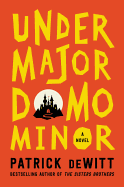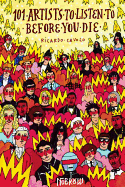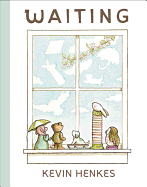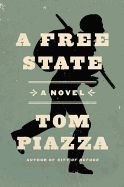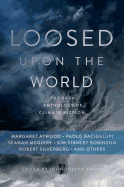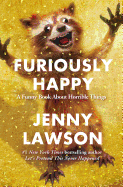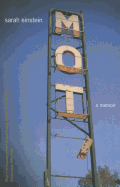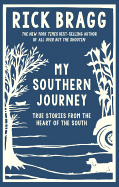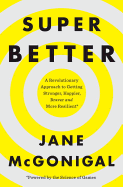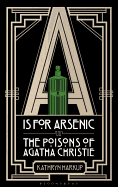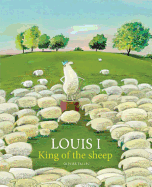Friday, September 25, 2015
Last year when I saw The Martian by Andy Weir, I couldn't resist picking it up. The bright orange cover compelled me to open the book, and the first two lines hooked me into reading one of the most thrilling stories of 2014. Now it's a movie, due to open October 2, directed by Ridley Scott and starring Matt Damon--perfect casting. It looks stunning in this trailer, which is good news, because Weir's novel deserves the best treatment possible.
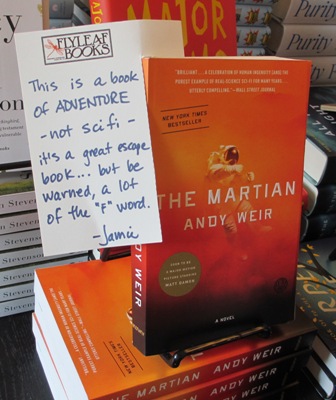 |
|
| Flyleaf Books in Chapel Hill, N.C. recommends The Martian, too. | |
Astronaut Mark Watney is stranded on Mars. A severe dust storm caused his Ares 3 crew to abort their mission; thinking he had been killed, they raced for their ship. He's alive, but what now? He has no way to communicate with Earth. A shelter--the Hab--is designed to last for only 31 days. Enough food to last 300 days, and four potatoes. A small amount of Earth soil with bacteria. He has, or will soon have, manure. And, oh yeah, it will take a rescue mission four years to get to Mars. But Watney is a botanist and mechanical engineer, so he figures he should be able to find a way to stay alive. In the meantime, "I wonder how the Cubs are doing."
Watney is very funny--sardonic and self-deprecating. It's a trait that serves him well as he figures out how to create arable soil. "Fear my botany powers!" Or how to create water, which provides him with many opportunities to die in a fiery explosion. Weir salts the narrative with humorous asides that take time to build: when you get to a line like "Disco. God damn it, Lewis," the payoff is stellar.
If the movie is half as good as it looks to be, people will be flocking to see it and then to bookstores to get a copy of The Martian (Broadway Books, $15 paperback). --Marilyn Dahl, editor, Shelf Awareness for Readers
Undermajordomo Minor
by Patrick DeWitt
After giving the western genre a makeover in his previous novel, The Sisters Brothers, Patrick DeWitt conjures up a dark fairy tale worthy of Wilhelm and Jacob Grimm in Undermajordomo Minor, a deliciously off-kilter coming-of-age story.
Always the misfit, a wimp among brutes and a compulsive liar, 17-year-old Lucien Minor leaves his home village of Bury with little fanfare after making an ill-gotten wish for "something to happen." He takes up the position of undermajordomo, assisting the chief household steward at the foreboding Castle von Aux. Lucy finds his new home inhabited by colorful if somewhat disturbing characters. His supervisor, Mr. Olderglough, refuses to tell him what happened to Mr. Broom, the previous undermajordomo. The Baron von Aux, Lucy's mysterious employer, is nowhere to be seen, and a feral stranger prowls the castle at night. When the Baron's estranged wife announces her return to the estate, the world turns upside down for its master and staff. Ensuing events thoroughly answer Lucy's wish for something to happen, if not in ways he would have liked.
DeWitt packs his scenes with sprightly banter and quirky circular arguments. His fairy-tale world combines elements of the medieval with more modern aspects such as travel by train, creating a partially historic, partially timeless feel. One gets the sense that life itself is having a bit of laugh at Lucy's expense, prompting vivid recollections of the pitfalls and pratfalls that come with growing up. Alongside the humor lies a wry wisdom about the hidden strengths of the perpetual outsider. Take special note of this delightful, wickedly sharp gem. --Jaclyn Fulwood, blogger at Infinite Reads
Discover: A young man seeks his fortune as undermajordomo of a remote and spooky castle in this fable for a modern-day world.
Quicksand
by Steve Toltz
Steve Toltz follows up his Man Booker Prize–shortlisted A Fraction of the Whole with a tragicomic novel about a misfit loser whose hapless adventures chronically misfire.
The novel opens when Liam, a reluctant policeman and failed novelist, visits his childhood friend Aldo, now a paraplegic after an unsuccessful suicide attempt. As Aldo recounts the sorry details of his life, Liam realizes he is listening to the makings of the epic novel he's been itching to write.
This novelist-writing-a-novel frame neatly captures the ironic tension at Quicksand's heart. Liam's success depends on Aldo's failures, which he recounts in horrifying and surreal detail. Many of them are absurd: his get-rich-quick schemes, like a BB&B (bed, breakfast and brothel), are ill conceived and in appallingly poor taste. Others leave shattered relationships in their wake. In a pivotal scene that marks the end of his marriage, he learns that his wife, a singer-songwriter, is about to give birth to a stillborn baby. They are at a concert, and in his confusion, Aldo presses her to get on stage and perform, then urges her to sing louder and even gives her a thumbs-up, knowing he's reacting in the worst possible way but powerless to stop himself.
On the surface, Quicksand is a clever novel about failure and friendship, told with brilliant irony and black humor, peppered with exuberant wordplay and one-liners--"Love for God is just Stockholm syndrome," he comments--but it is ultimately a cri de coeur protesting the futility of suffering and celebrating the simple victory of being alive. --Jeanette Zwart, freelance writer and reviewer
Discover: An ambitious, energetic, darkly funny novel about the tragic futility of suffering and pain.
A Free State
by Tom Piazza
Versatile music historian and recipient of the State Library of Louisiana 2015 Writer Award, Tom Piazza is perhaps as much known for his work as a writer for HBO's Treme as he is for his essays about literature and music in Devil Sent the Rain (2011) and his novel City of Refuge (2008). Set in the years before the Civil War, when Abolitionist sentiment was growing in the North and the South was clinging stubbornly to its social and economic dependency on slavery, A Free State is the story of two young men. James Douglass is white, from Pennsylvania, and joined the circus to escape a mean Scotch-Irish father. Henry Sims is a light-skinned Negro fleeing a Virginia plantation and its master (who is also his father) for freedom on the streets of Philadelphia. Douglass is the founder and "bones" player of the blackface minstrel troupe "The Original Virginia Harmonists--Purveyors of Ethiopian Airs, Plantation Jigs and Every Variety of Negro Jollity." Sims is a naturally adept banjo player with a theatrical flair for comedy. Their common love of music and entertainment draws them together on stage, where Sims "blacks up" his face to blend in with the other members of the group and hide from the sadistic slave bounty hunter hired by his father.
With lively characters and a well-paced hide-and-seek plot, A Free State is also a meditation on an uneasy American blend of race, freedom, music, violence and the ways we hide behind our many masks. Piazza deftly blends his numerous interests into a solid little historical novel that exposes many uncomfortable truths still prevalent today. --Bruce Jacobs, founding partner, Watermark Books & Cafe, Wichita, Kan.
Discover: A historical novel of slavery, blackface minstrelsy and the role of music in mitigating despair.
Science Fiction & Fantasy
Loosed Upon the World: The Saga Anthology of Climate Fiction
by John Joseph Adams, editor
With superstorms, megadroughts, ecoterrorism and polluted police states, Loosed Upon the World offers chilling visions of near-futures decimated by global warming. Compiled by John Joseph Adams, the Hugo Award-winning editor of Lightspeed magazine and Best American Science Fiction & Fantasy series editor, this is the first major anthology of climate fiction, or cli-fi, a subgenre whose popularity is rising alongside average global temperatures.
The majority of these tales are effective, some especially so. Paolo Bacigalupi contributes two stories that take place in a desiccated southwestern United States where water is more valuable than human life. One of them, "Shooting the Apocalypse," feels like a missing chapter from his novel The Water Knife--not that this is a bad thing. It and Bacigalupi's other story, "The Tamarisk Hunter," are among this collection's strongest entries.
Sean McMullen's "The Precedent" careens into a terrifying dystopic vision of the World Audit, where "tippers"--everyone born before the year 2000--are held to brutal account for their roles in ruining the earth. Masked auditors pass death sentences for climate crimes like squandering resources or denying climate change. Like other gems in this genre, "The Precedent" forces readers to confront their own complicity in global warming.
Even Margaret Atwood, who helped popularize cli-fi with her MaddAddam trilogy, makes an appearance, though her entry is more flash fiction than short story. Fans of speculative fiction and readers concerned about the potential future of our planet owe it to themselves to read Loosed Upon the World. --Tobias Mutter, freelance reviewer
Discover: This anthology of short stories explores the impacts of climate change.
Biography & Memoir
Furiously Happy
by Jenny Lawson
Jenny Lawson, aka The Bloggess, follows up her popular memoir, Let's Pretend This Never Happened, with Furiously Happy, another book of essays about incidents that sound too wacky to be true but which longtime fans of her writing will recognize as everyday occurrences in her life.
This time around, Lawson also delves into the topic of mental illness, which she struggles with, having suffered depression, panic attacks, anxiety disorders and a "terrible boxed set" of other disorders and phobias. Despite the serious subject matter, Lawson's sense of humor remains intact. Readers will likely shake with laughter at her escapades, such as encountering inept ninjas trying to break into her hotel room in Japan, receiving the skins of three dead cats in the mail, running away from killer swans and her cats stealing her voodoo vagina.
In "Pretend You're Good at It," Lawson tells about one night in New York City when she can't sleep, is gripped by an anxiety attack and her foot is bleeding badly from the combination of cold weather and rheumatoid arthritis. When she looks out a window and sees falling snow, she decides to takes a walk in her bare feet and experiences a sense of calm. On the way back, she notices her footprints: "One side was glistening, small and white. The other was misshapen from my limp and each heel was pooled with spots of bright red blood. It struck me as a metaphor for my life." It could also be a description for this book--half light and humorous, half dark and raw. And fans will be grateful for it. --Elyse Dinh-McCrillis, blogger at Pop Culture Nerd
Discover: The Bloggess offers frank but funny discussions about mental illness.
Mot: A Memoir
by Sarah Einstein
Sarah Einstein had worked with the homeless for all of her adult life when she met Mot. After being assaulted at work (at a drop-in center for adults with mental illness), Einstein left her job. Her marriage, just a year old, was faltering. In Mot, a gentle veteran who had lived outdoors for many years, she found a mildness that appealed to her. However, Mot also lived with a slough of harpies, dead ancestors, deities and villains in his head.
In her memoir, Mot, Einstein reflects on this relationship, the trips she took from her home in West Virginia to visit Mot in Amarillo and Oklahoma City, and the time she was able to bring him home with her. In a deceptively simple narrative, readers learn about the pantheon that lives in Mot's head, a mythology Einstein is only sometimes able to follow. She relates the difficulties of her own marriage, and questions herself as she moves away from direct service. She doesn't claim to have the answers, although in her epilogue she exhorts her readers to find ways to contribute. Mot is not, however, about helping the homeless at its center: it is about one man's strengths, his kindness and skills (fixing up old cars, pruning apple trees, building things), and his difficulties in separating reality from those he calls the "Big Guys Upstairs."
In her lovely, unadorned and unassuming storytelling, it becomes clear that Einstein is herself flawed and troubled. But the glimpse into Mot's individuality and a rare friendship is illuminating and singular. --Julia Jenkins, librarian and blogger at pagesofjulia
Discover: A brief, quietly powerful memoir of the author's friendship with a homeless, mentally ill veteran.
Essays & Criticism
My Southern Journey: True Stories from the Heart of the South
by Rick Bragg
My Southern Journey: True Stories from the Heart of the South showcases the singular voice, humor and perspective of Pulitzer Prize-winner Rick Bragg (All Over but the Shoutin'), in short, entertaining stories. As he introduces it, "this book is a collection of Southern stories, but it is not a litany of pig pickins and frat parties and cutthroat beauty contests." Rather, these are fervent, funny, heartfelt memories of places and cultures that need remembering.
Bragg shares his experience of the Deep South, from his family home in northern Alabama to Florida, Louisiana and the Alabama coast. Readers quickly become acquainted (or reacquainted) with his large and lively family, as Bragg brings immediacy and intimacy to his setting and cast of characters. His mouthwatering descriptions of the food of his homeland--centered on various forms of pork but with a heavy emphasis on Gulf Coast seafood as well--are flavorful and evocative. He occasionally claims that "I can't write well enough to tell you how good it was," a risky writerly trick that Bragg easily pulls off. He considers the red dirt of northeastern Alabama as both physical and symbolic. Bragg's tone is self-effacing and often hilarious, which belies his ability to approach serious issues, like his treatment of overfishing and the Deepwater oil spill.
In exploring family, a sense of place or home, and the distinctive details of Southern food and culture, Bragg exhibits an exquisitely nuanced, clever voice, partly disguised by a down-home accent. Readers will laugh, and cry, and yearn to head South. --Julia Jenkins, librarian and blogger at pagesofjulia
Discover: Extraordinary, brief, true stories of the Deep South that are funny, haunting and redolent.
Psychology & Self-Help
SuperBetter: A Revolutionary Approach to Getting Stronger, Happier, Braver and More Resilient--Powered by the Science of Games
by Jane McGonigal
As the subtitle suggests, SuperBetter promises readers a revolutionary approach to a better life. While most (if not all) self-help books promise something similar, SuperBetter stands apart in its method, using the science of games to offer suggestions and advice on subjects like overcoming depression and anxiety, losing weight or finding love.
Jane McGonigal, a game designer, explores the overlap between games and self-improvement from two sides. First, there are the myriad ways that games of all types can improve one's mood, leadership skills, social connections, physical health and so on. Then there are the ways that this scientific knowledge can be leveraged to design a game--in this case, SuperBetter--aimed to help players improve their lives in some measurable way. Some of SuperBetter can feel hokey at times--McGonigal asks readers to contemplate their own personal "bad guys" and search for "power-ups" in their daily lives--but this is balanced with extensive scientific research cited throughout the text, as well as in a dedicated "About the Science" appendix.
SuperBetter can be customized with ease. Readers can choose to engage with the quests and power-ups peppered throughout McGonigal's account of her scientific research, or simply read the theories presented. These quests, power-ups and theories can then be taken as a roadmap to designing one's own gameful approach to an improved life--no matter what "improved life" may mean to each individual reader. Strange? Perhaps. More fun than your typical self-help book? Definitely. --Kerry McHugh, blogger at Entomology of a Bookworm
Discover: A scientific exploration of the power of games to change one's life for the better.
Science
A Is for Arsenic: The Poisons of Agatha Christie
by Kathryn Harkup
Chemist Kathryn Harkup combines her scientific expertise and love of a good mystery in her first book, A Is for Arsenic: The Poisons of Agatha Christie. B is for belladonna, and C is for cyanide, as Harkup works her way through 14 mysteries and 14 discrete poisons, with meticulous and informed explanations of the science behind each toxin's effects (an appendix contains chemical structures). Each chapter also details famous real-life cases involving these deadly substances, including those that might have inspired--or been inspired by--Christie's work, and analyses of how accurately the Queen of Crime represented the science within her stories. Generally the renowned writer does very well: as Harkup explains, Christie worked as a volunteer nurse in World War I and showed such aptitude that she was encouraged to continue her education and training as a pharmacist. By the Second World War, her work as a dispenser left her ample time to pursue her other profession, writing bestselling stories and novels.
Harkup's writing style is accessible to the lay reader, although she does become technical when discussing poisons' actions on the body, with full detail at the cellular level. She keeps these explanations short, however, and general readers will be able to follow along. For Christie fans, the review of famous mysteries is great fun, and the few spoilers come with ample warning. A Is for Arsenic is both informative science and a spur to read or reread the most popular mysteries ever written. --Julia Jenkins, librarian and blogger at pagesofjulia
Discover: A comprehensible survey of poisons and a celebration of the Queen of Crime.
Performing Arts
101 Artists to Listen to Before You Die
by Ricardo Cavolo, illus. by Ricardo Cavolo
Spanish artist and illustrator Ricardo Cavolo's beautifully illustrated music diary, 101 Artists to Listen to Before You Die, offers a celebration of musicians and bands who have been most important in his life. "It's me trying to start to put down some coordinates for our musical universe," he writes.
Cavolo merges his love of music and art by giving each artist/band (listed in rough chronological order) a two-page spread. The left page offers his handwritten assessment and memories of the artists and the right page features his tribal, bright and boldly colored Frida Kahlo-esque illustration of the person or group.
Johnny Cash "is officially my favorite of all time," Cavolo writes of the only artist to merit two entries. "Everything is bigger and better with that voice. It makes a man feel secure, the baby stays sleeping soundly, and the mountains crack open with those low tones." He writes that Amy Winehouse "came on the scene for a few years to make us believe that the divas of soul and R&B had come back to life and rematerialized in the form of a girl from London."
A passionate music lover, Cavolo's charming personal anecdotes and lush praise are enticing invitations to explore and sample a range of music. His appreciation crosses musical genres to include Mozart, Leadbelly, the Crystals, Hank Williams, Velvet Underground, Cypress Hill, Mos Def, M.I.A., Daft Punk, the Sex Pistols, Public Enemy and the Beach Boys. And Cavolo's vibrant portraits--a mixture of folk- and tattoo-inspired art--are equally mesmerizing. --Kevin Howell, independent reviewer and marketing consultant
Discover: A visual celebration of legendary and obscure acts from classical, blues, country, soul, electronica, rap and metal.
Children's & Young Adult
Waiting
by Kevin Henkes
Caldecott artist Kevin Henkes (Kitten's First Full Moon) sees and beautifully articulates the in-between moments in a child's life. In his lovely, rather philosophical picture book Waiting, Henkes acknowledges that children spend a lot of time waiting for something, or anything, to happen.
Waiting is a microcosm: five sentient toys on a windowsill. "The owl with spots was waiting for the moon." "The pig with the umbrella was waiting for the..." (If the reader pauses, a child will no doubt cry out "rain!") The dog with a sled waits for snow, the kite-holding bear for wind. The rabbit "just liked to look out the window and wait." The simple narrative's most gasp-worthy moment? An ornate toy elephant visits the windowsill, only to fall and break into pieces: "he left and never returned." Outside the window, the seasons march forward in soft, colored-pencil drawings that distinguish the outside world from the inside world, which is captured in brown ink and friendly pastel watercolors. The toys see "wonderful, interesting things" out there: a rainbow, a lightning storm, icicles and frost, fireworks. The loss of the elephant is countered by the arrival of a nesting-doll cat. "Was she waiting for the moon? No." "Was she waiting for the rain? No." (This is a great chance for toddlers to say their favorite word with gusto!) She was waiting for something... for four baby kittens to tumble out!
In the end, the toys, now 10 in number, watch a constellation of butterflies dance around the blossoming branch. They are waiting, just waiting. And something's bound to happen. --Karin Snelson, children's editor, Shelf Awareness
Discover: Five toys sit on a windowsill waiting for something to happen in this quiet charmer from Caldecott artist Kevin Henkes.
Symphony for the City of the Dead: Dmitri Shostakovich and the Siege of Leningrad
by M.T. Anderson
In a remarkable feat of research, synthesis and storytelling, National Book Award winner M.T. Anderson (The Astonishing Life of Octavian Nothing) introduces Dmitri Shostakovich, the composer whose work is intimately entwined with the history of Russia, from the Bolshevik Revolution through the Cold War.
Shostakovich spent much of his life in Leningrad (called St. Petersburg at the time of his birth--and again today), surviving the collapse of Tsarist Russia, the arrival of Lenin, Stalin's Great Purge, World War II and the Cold War. Anderson guides readers through Russian history, the artistic movements of the early 20th century and Shostakovich's biography. The Siege of Leningrad occurs nearly halfway through the book, and makes devastating reading. Shostakovich was compelled to begin composing what he called "my Seventh Symphony" during its first months, even marking the score v.t. ("vozdushnaya trevoga, 'air-raid alarm' ") each time he ran for the bomb shelter. The world premiere of Shostakovich's Leningrad Symphony on March 5, 1942, boosted morale throughout his country--and in the U.S., where his story softened the populace's attitude toward the Soviet Union and allowed Roosevelt to send crucial aid to Stalin. Along the way, Anderson describes the sound and structure of classical music in ways that teen readers will understand; he captures how Shostakovich used music to communicate.
This is a long and complicated book, only sparsely illustrated with black-and-white photographs, but it culminates in a rich and moving understanding of the intersection of culture and history, and of the power of the arts to save a nation. --Angela Carstensen, school librarian
Discover: In this biography of Dmitri Shostakovich, M.T. Anderson orchestrates a masterful work of history in which the arts play a crucial role.
Louis I, King of the Sheep
by Olivier Tallec, transl. by Claudia Zoe Bedrick
Oh, to be king... if only for a little while. Olivier Tallec's glorious, oversized picture book Louis I, King of the Sheep, originally published in France, explores the often fleeting (and in this case bleating) nature of power.
The book opens wordlessly, with a wonderful, moody painting of a sheep on a hill on a day blustery enough to blow fall leaves--and a blue crown--straight toward him. Four spot illustrations follow: 1) Sheep is eye to eye with the crown 2) Sheep looks sheepishly around 3) Sheep stands up and dons the crown 4) Sheep strikes a regal pose: "And so it was one windy day that Louis the Sheep thereby became Louis I, King of the Sheep," a stately first line, charmingly hand-lettered. A king needs certain things to govern. A scepter, for instance, or a scrawny branch will do. A throne "from which to hand down justice, because justice is rather important." Louis I's royal imaginings grow more comically elaborate--with Versailles-style topiary gardens and penguin ambassadors--and more sinister, as he commands "his people" to march in sheep-step behind him, then banishes all the sheep who don't resemble him. Keen-eyed readers may glimpse a wolf tucked here and there throughout... foreshadowing another blustery day when the wind blows the crown off the sheep's head and onto the wolf's.
This funny, fresh political allegory reflects how power has been found, corrupted and lost throughout history, but there are few children who haven't experienced the rush of a playground victory, only to see the powerful moment blow away, just like that. --Karin Snelson, children's editor, Shelf Awareness
Discover: A sheep becomes a king and his initial visions of justice devolve into topiary and tyranny in this hilarious cautionary tale from France.


